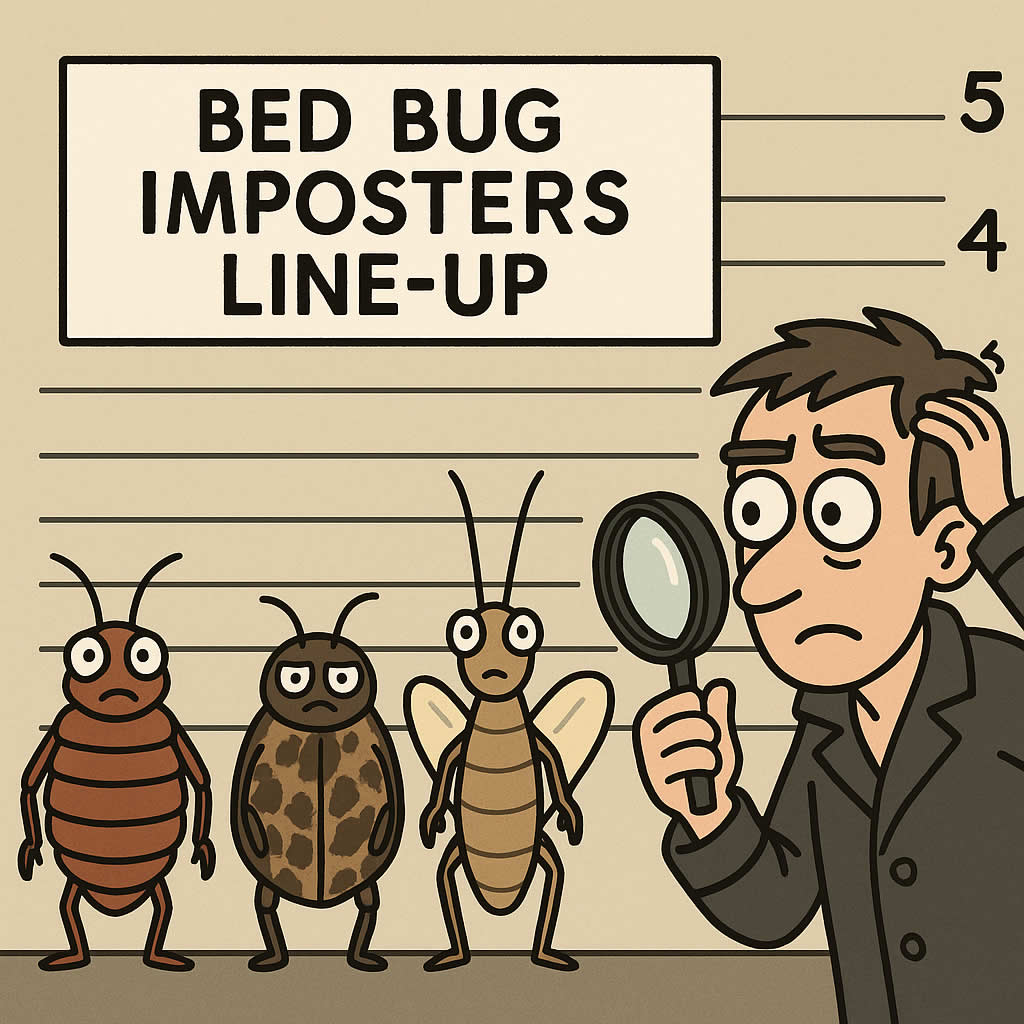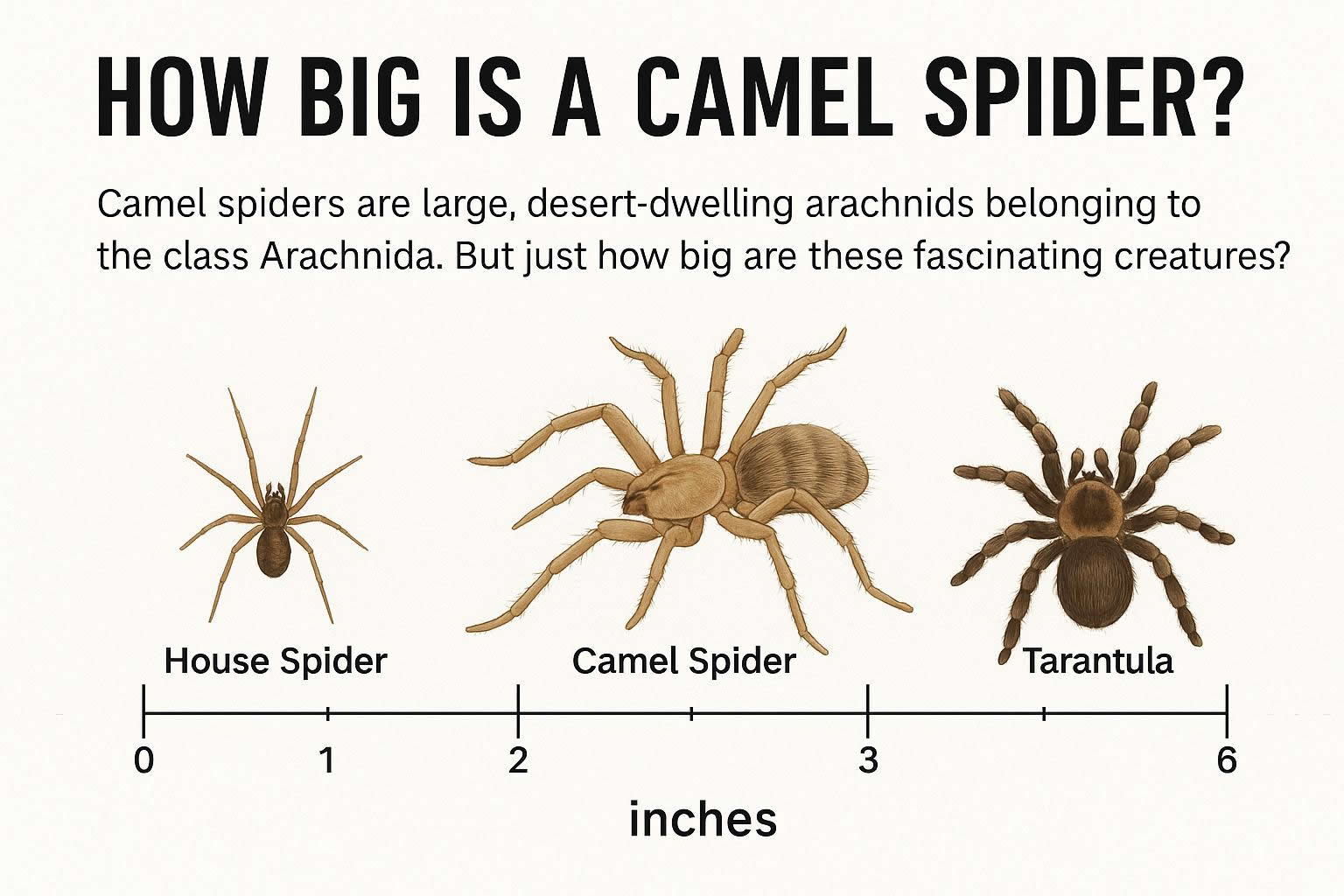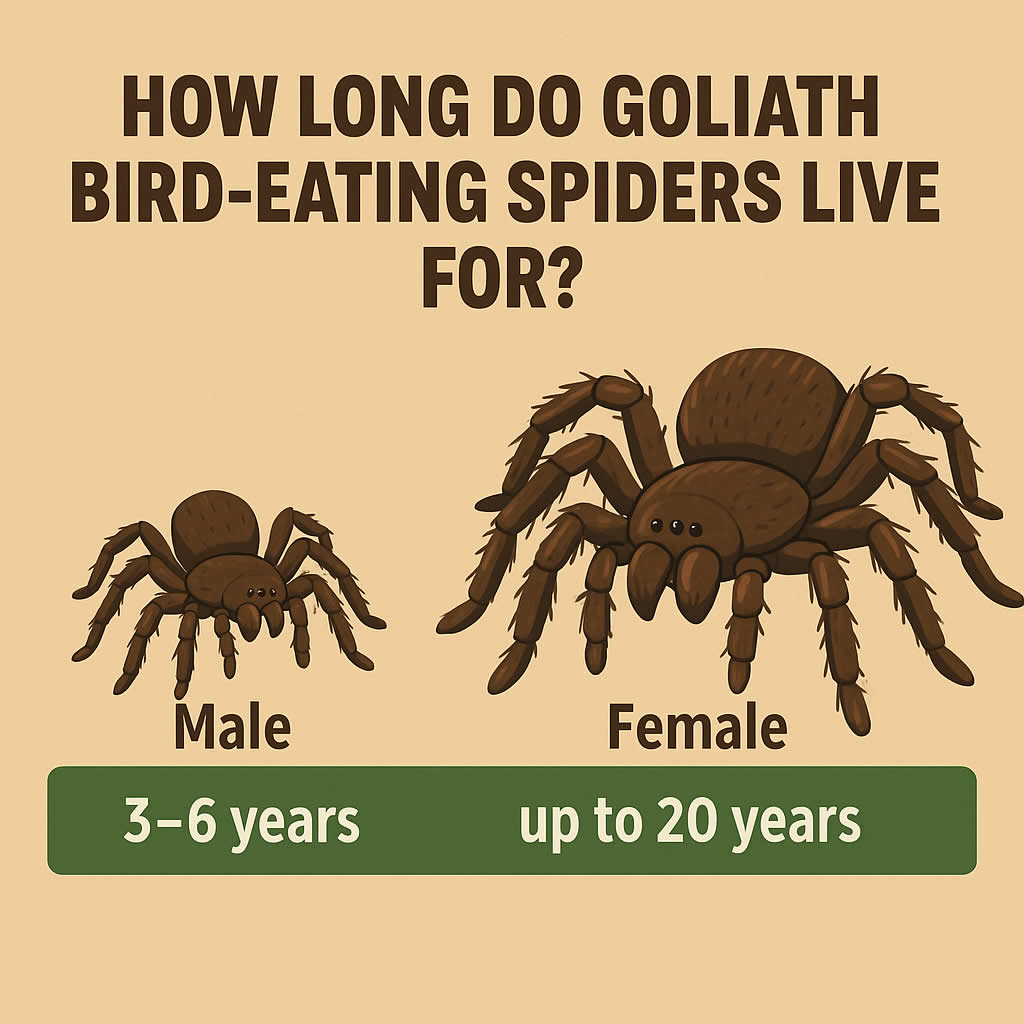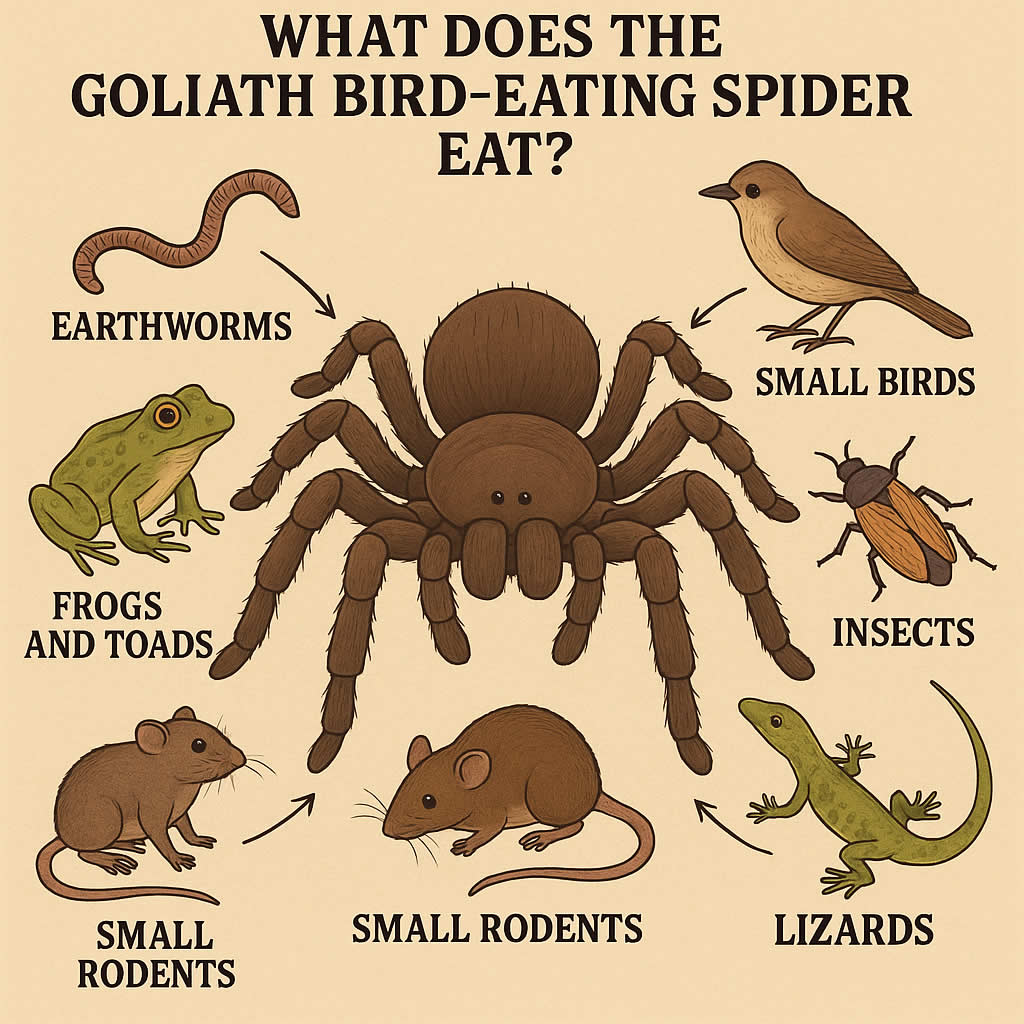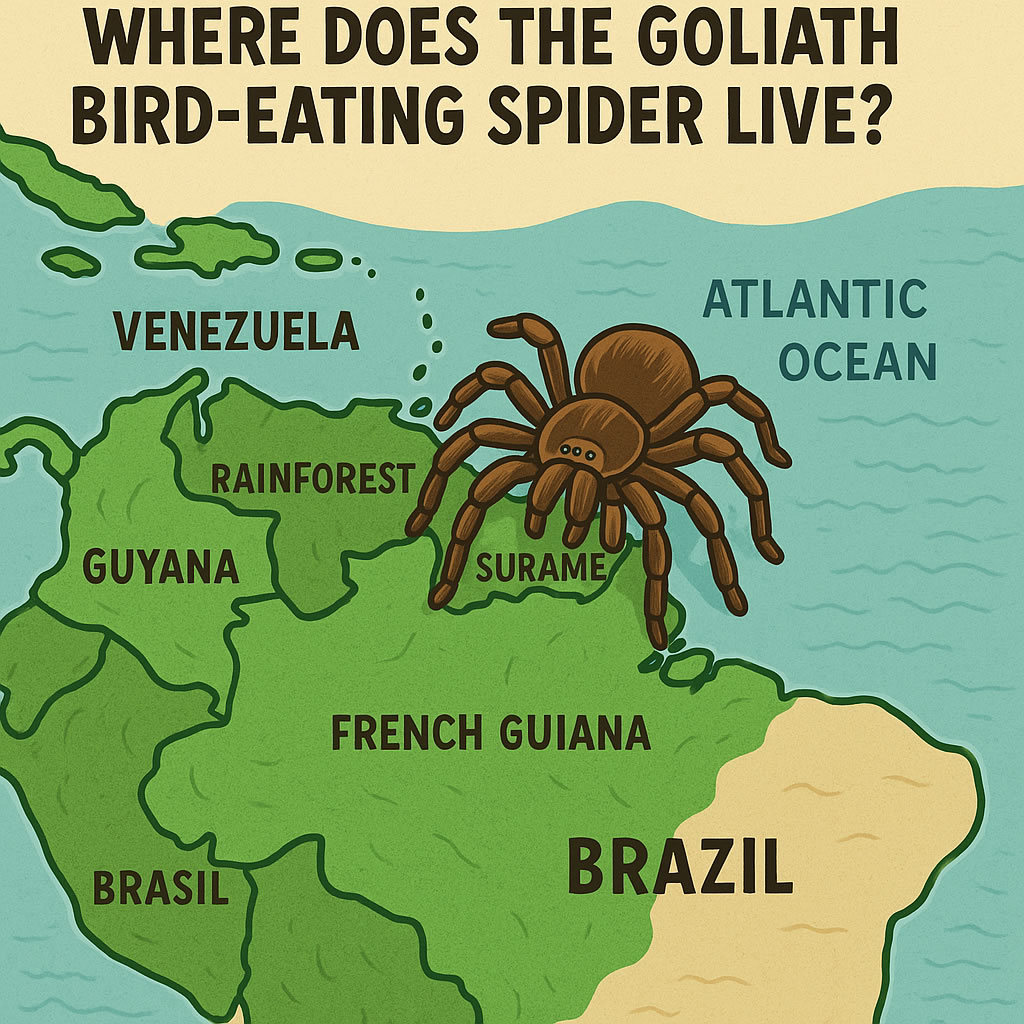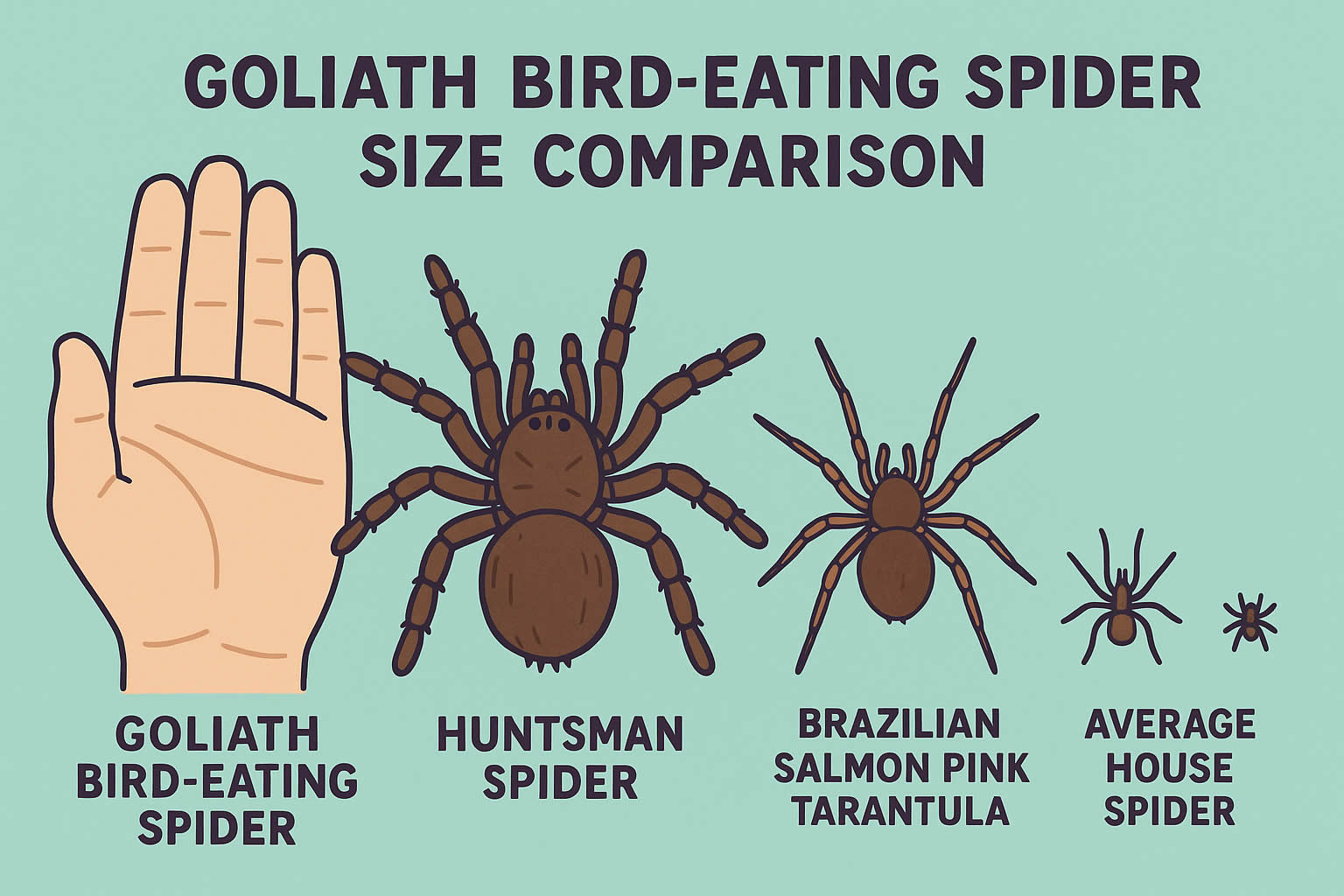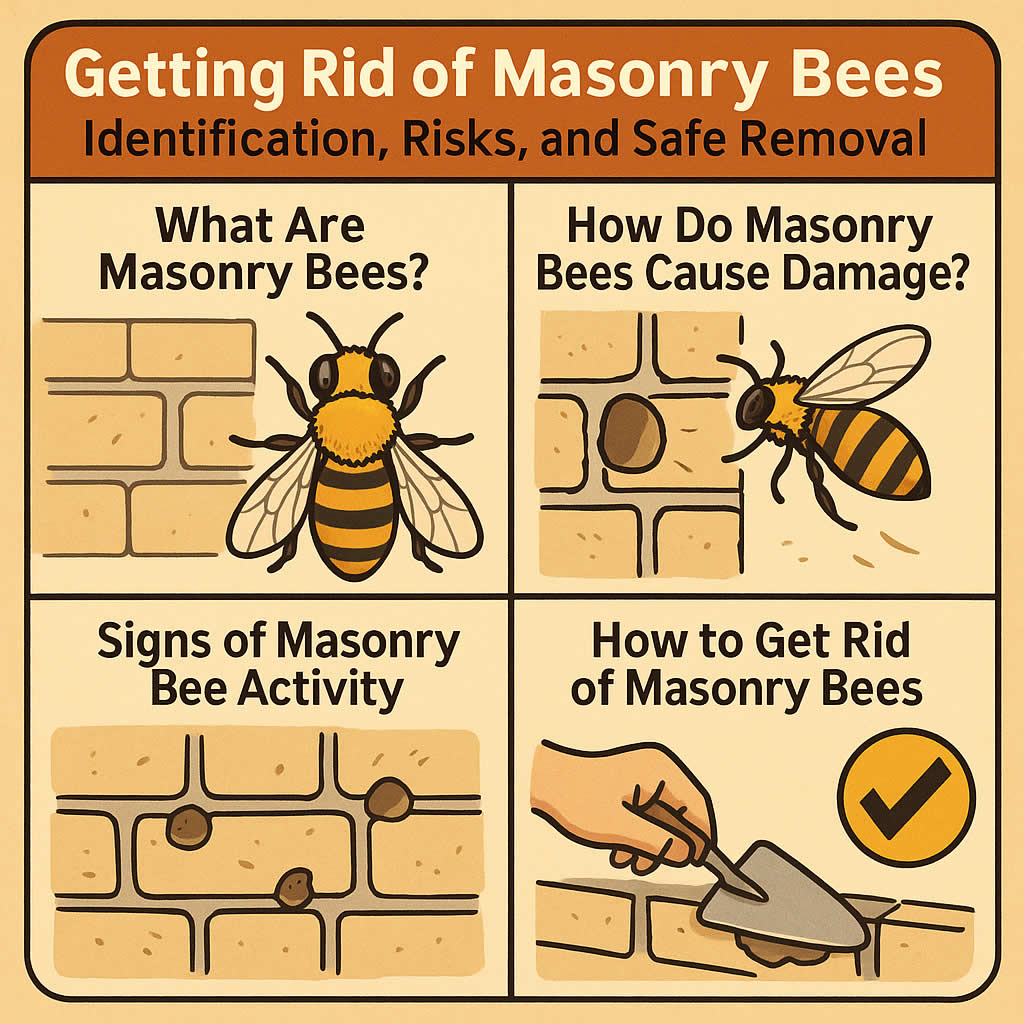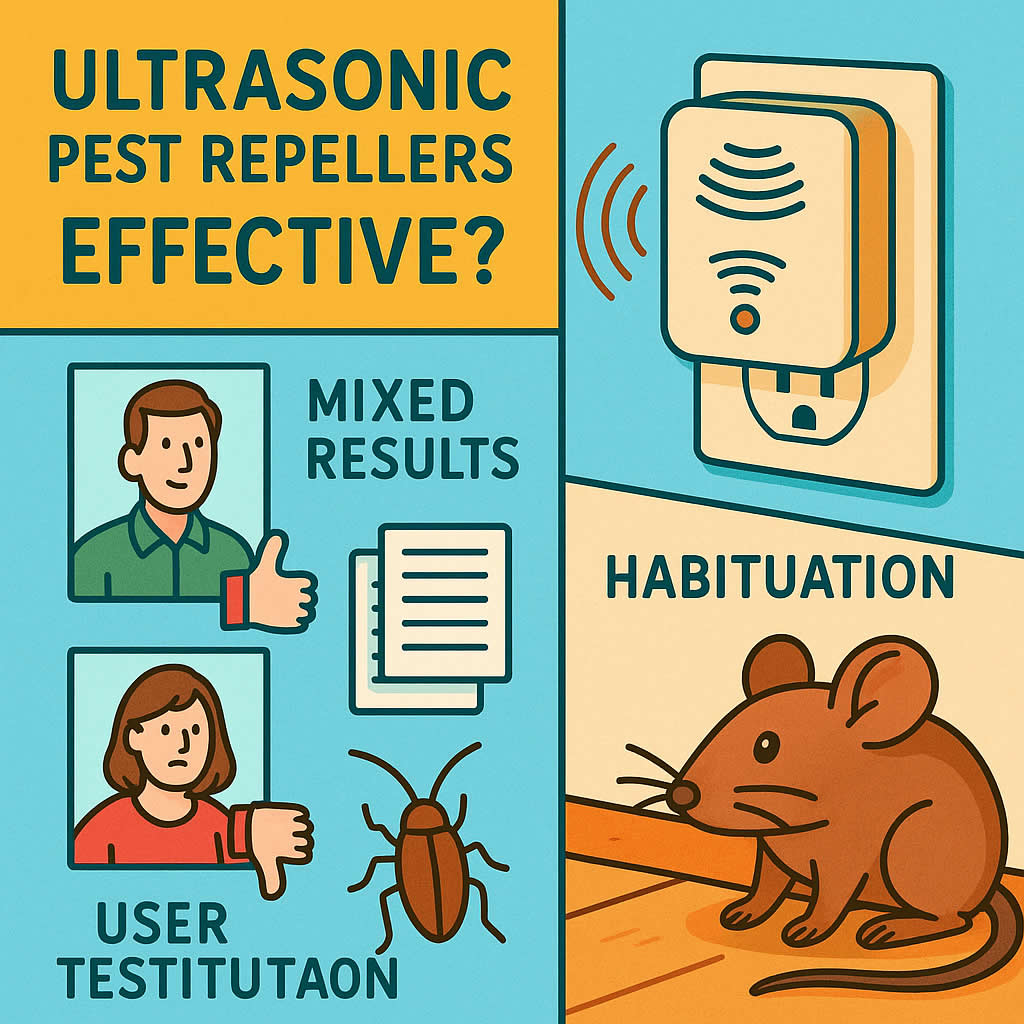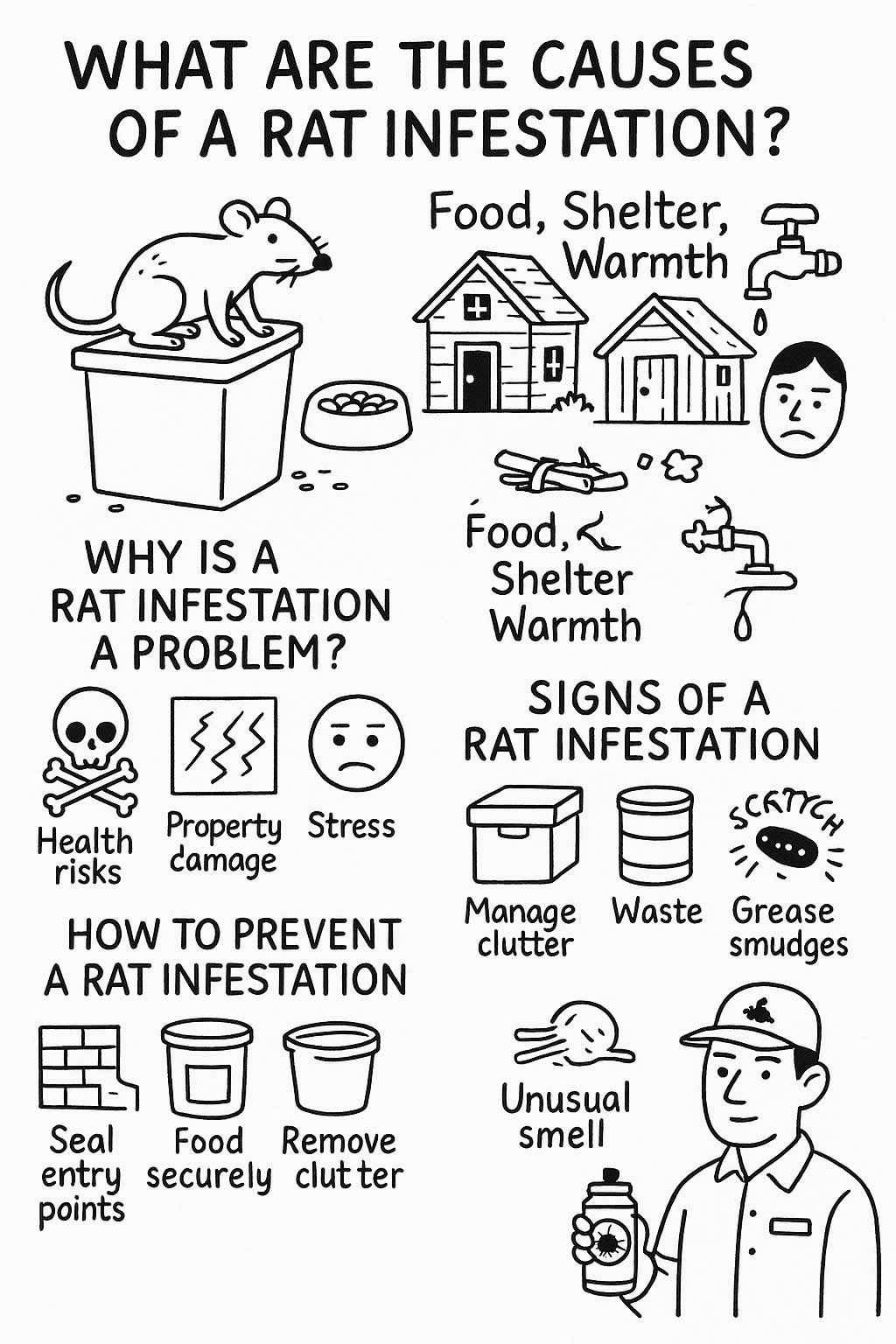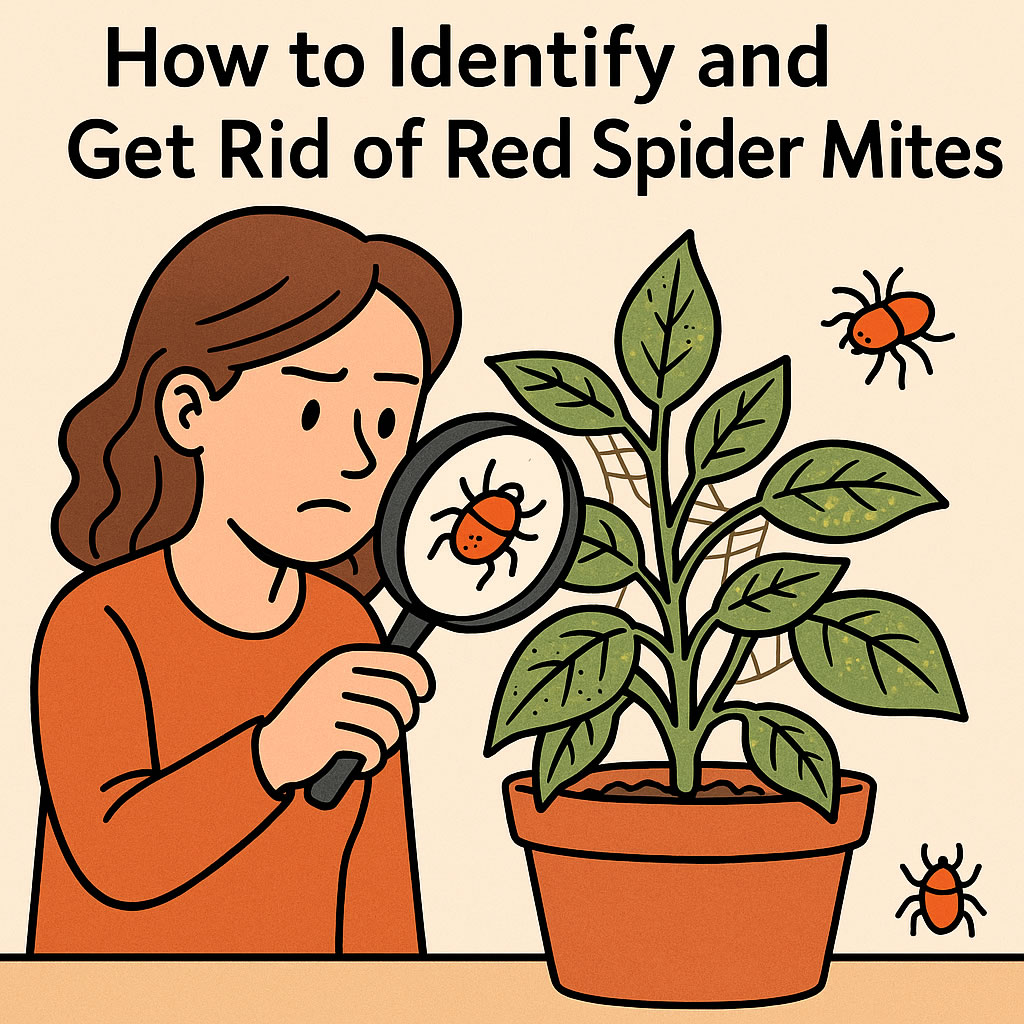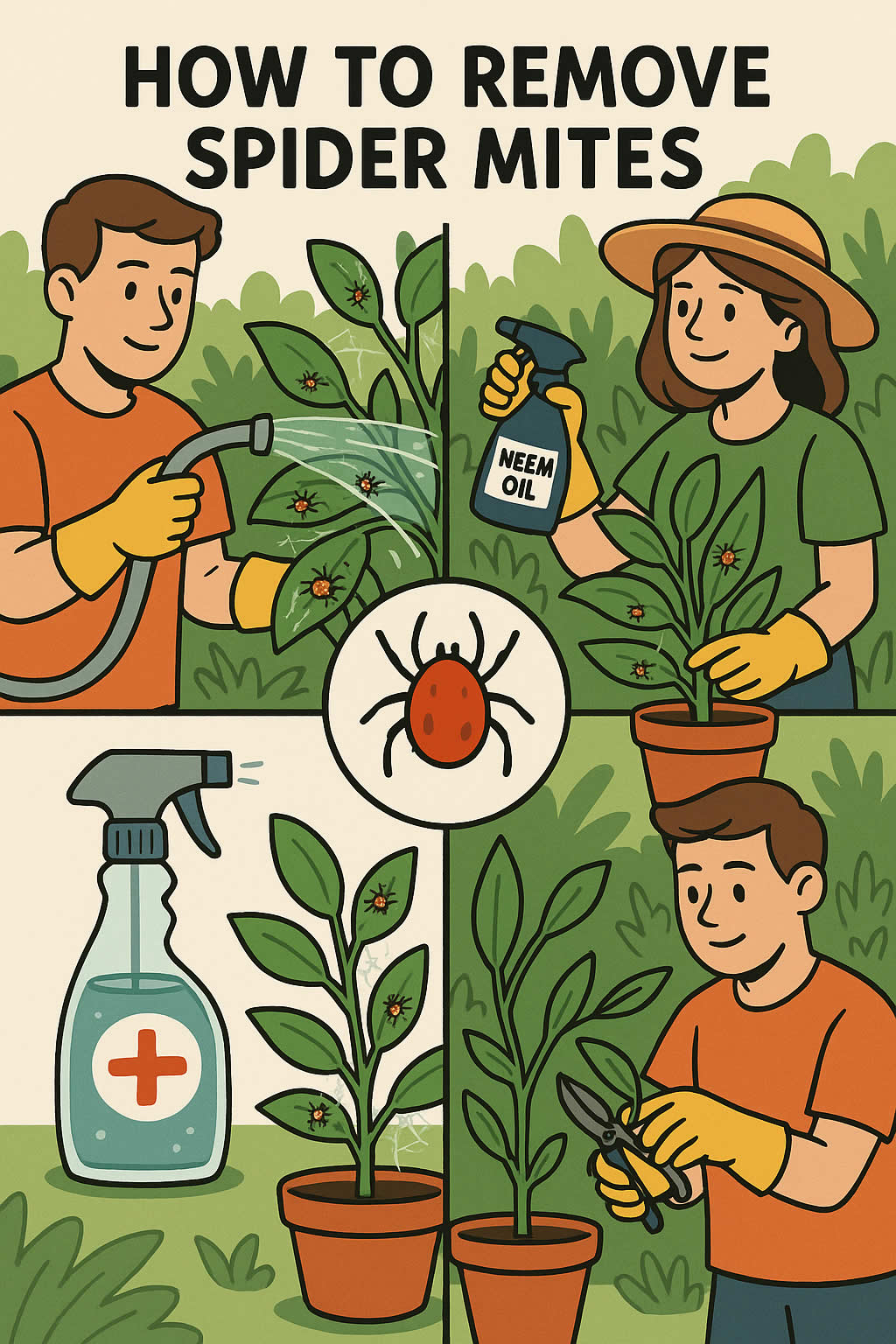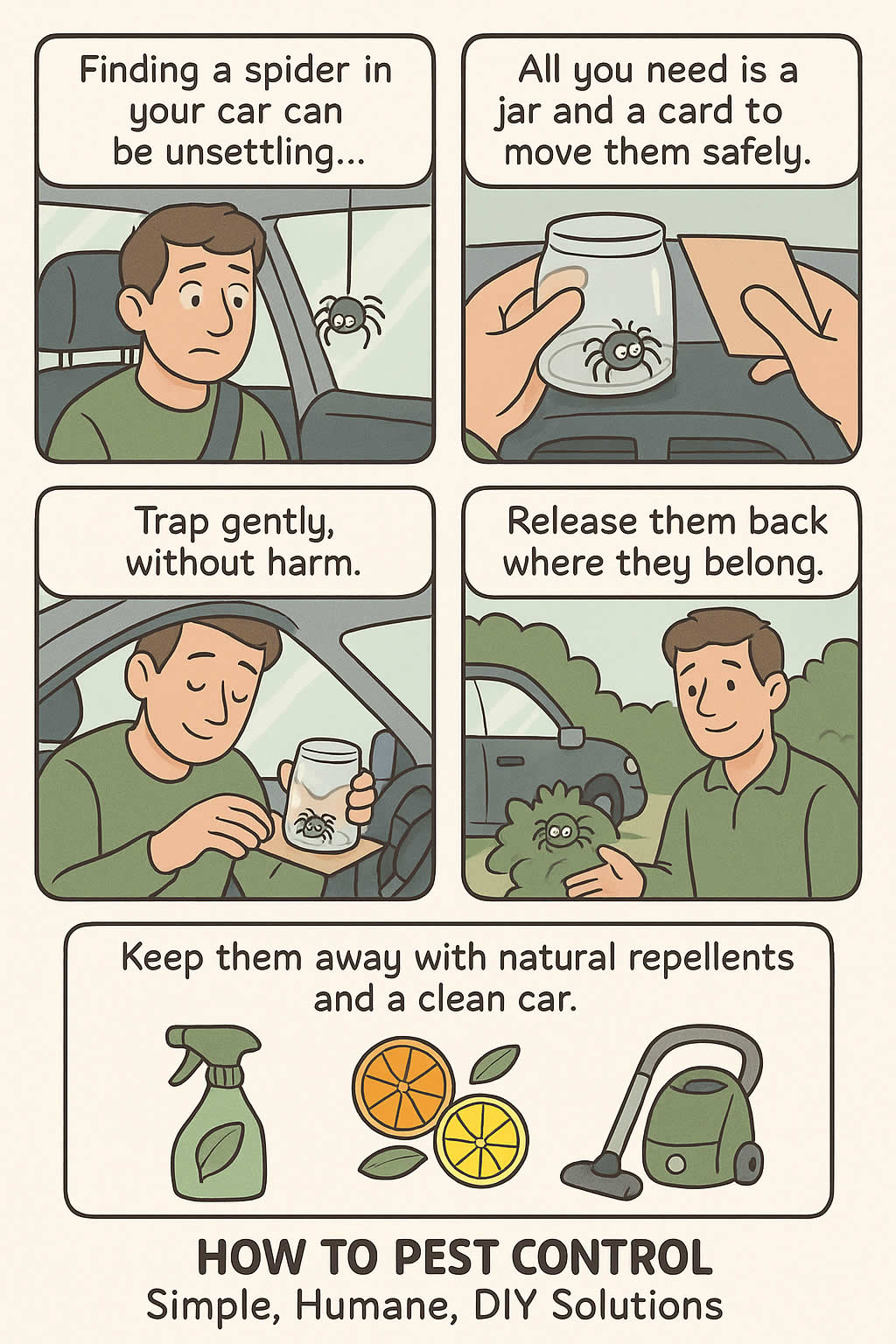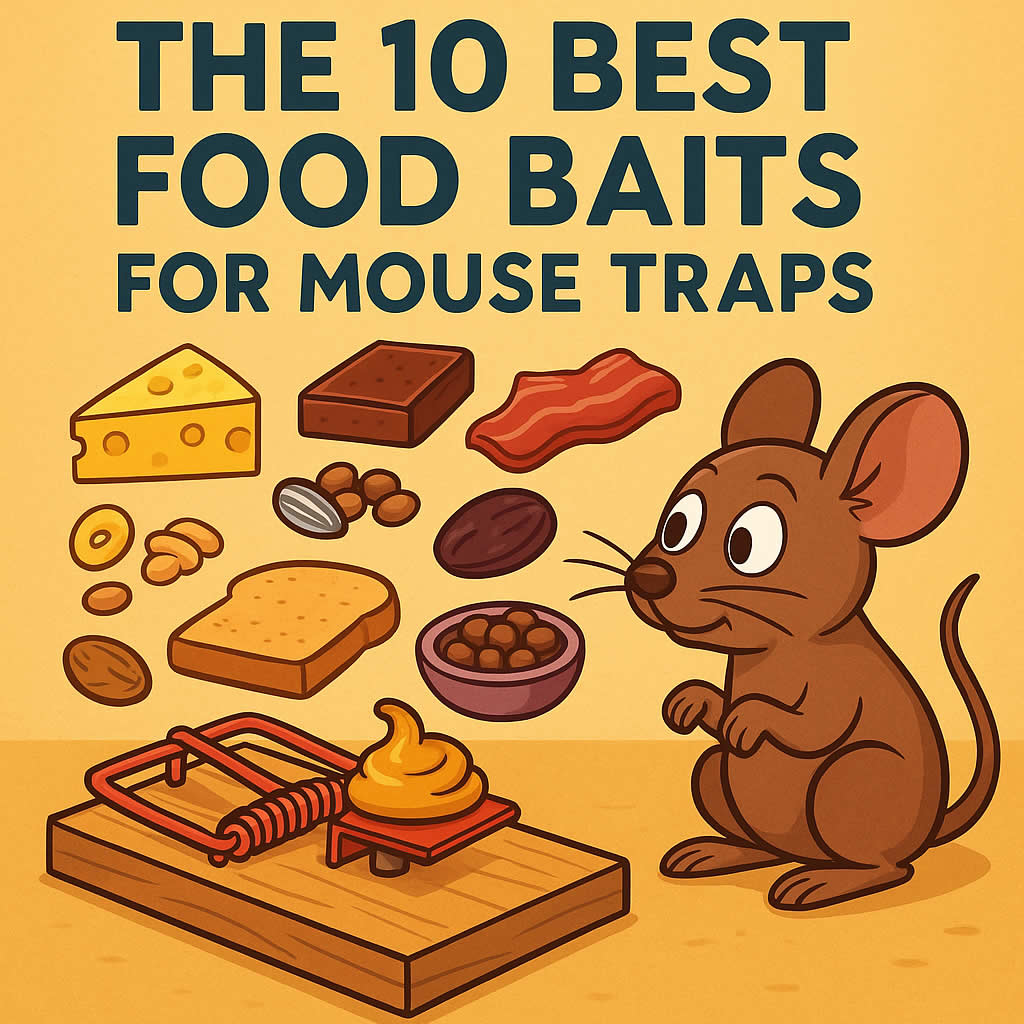Related Queries
ToggleIf you’ve ever spotted a tiny insect at home and felt that wave of panic thinking it could be a bed bug, you’re not alone. The problem is that many small insects look a lot like bed bugs, and some of them even have wings. That makes it tricky to know what you’re really dealing with, and the last thing you want is to ignore a problem that could get worse. On the other hand, you also don’t want to treat your home for bed bugs when the pest is actually something completely different. Getting the identification right saves you time, stress, and money.
In this guide, we’re going to look at why so many people confuse bed bugs with other insects, which bugs look similar but can fly, and how you can spot the differences. By the end, you’ll know how to recognise the signs, what to do if you’re not sure, and when it’s time to call in professional help.
Why do people confuse other insects with bed bugs?
Bed bugs are small, flat, and oval-shaped. They have reddish-brown bodies and can be around the size of an apple seed when fully grown. If you spot a small, dark insect crawling across your bed, sofa, or wall, it’s easy to assume the worst. The thing is, quite a few common insects share a similar size, colour, or shape, which makes confusion likely.
Lighting, speed, and location all play a role. If you see an insect quickly in low light, your brain fills in the blanks and bed bugs are often the first thought. It’s also about where you see them. A bug on your mattress or bedding instantly sets alarm bells ringing, even if it’s not actually a bed bug.
Another reason for confusion is that most people don’t have much experience spotting insects up close. Unless you’re trained, small details like wing shape, antenna length, or body texture are easy to miss. So a beetle or a cockroach nymph can look very similar to a bed bug until you take a closer look.
Which bugs look like bed bugs but can fly?
Here’s where it gets interesting. Bed bugs themselves don’t fly. They don’t have wings, and they can’t jump. So, if you see an insect that resembles a bed bug but takes flight, you already know it’s something else. Let’s go through some of the most common culprits.
Bat bugs
Bat bugs are the closest relative to bed bugs. They look almost identical, with the same shape and colour. The difference is in the hair length on their bodies, which you’d struggle to notice without magnification. They normally live around bats, often in attics or roof spaces. While bat bugs don’t usually infest human bedding unless bats are nearby, spotting them can cause the same alarm as bed bugs. Importantly, bat bugs don’t fly — but they can be found near areas where flying insects are present, so confusion happens when they’re spotted with other pests.
Carpet beetles
Carpet beetles are probably the most common insect mistaken for bed bugs, especially because their larvae can be found in bedrooms. Adult carpet beetles are rounder than bed bugs and usually have wings, which means they can fly. They often show up near windows or light sources, which bed bugs don’t do. The larvae, however, are hairy and can trigger skin irritation, which makes people worry they’re being bitten. Unlike bed bugs, carpet beetles don’t feed on blood — they eat fabrics, carpets, and stored food.
Cockroach nymphs
Young cockroaches, especially German cockroach nymphs, can be mistaken for bed bugs because of their small size and dark colour. As they grow, cockroaches develop wings, and adults can glide or fly. Finding cockroaches in a bedroom is less common than in a kitchen, but it can happen, especially in flats or shared housing. The main difference is that cockroaches are faster movers and are usually found near food or damp areas, not in beds.
Termites
Flying termites, also known as swarmers, can sometimes confuse people. They have wings and a straight, elongated body that doesn’t look exactly like a bed bug, but if you’re not sure what you’re looking at, panic sets in. Termites usually appear in large numbers, often around lights, and they drop their wings after swarming. Unlike bed bugs, termites aren’t interested in you — they’re focused on wood.
Booklice
These tiny insects are pale brown or translucent and sometimes mistaken for bed bug nymphs. Some species have wings and can fly. They’re usually found in damp areas, feeding on mould or mildew rather than blood. If you see small insects near windowsills, skirting boards, or damp corners, they’re more likely to be booklice than bed bugs.
How do you tell the difference between bed bugs and flying insects?
The key is to look at three main things: wings, behaviour, and location.
- Wings: Bed bugs don’t have them. If it flies, it’s not a bed bug.
- Behaviour: Bed bugs are slow crawlers and hide in cracks near beds. Flying insects tend to be more active and attracted to light.
- Location: Bed bugs stick close to where people sleep or sit for long periods. If you’re finding insects near windows, food, or damp areas, you’re probably not dealing with bed bugs.
Taking a clear photo with your phone and zooming in can often help you tell the difference. Comparing what you see with online images of bed bugs versus carpet beetles or cockroaches can also clear things up.
What signs should you look out for if you’re worried about an infestation?
Spotting one bug doesn’t always mean you have an infestation, but there are signs you can check for. With bed bugs, the main things to look out for are:
- Tiny dark spots on bedding or mattresses, which could be droppings.
- Small blood smears on sheets from crushed bugs.
- Shed skins from bed bug moults.
- A sweet, musty smell in severe infestations.
With carpet beetles, you might notice damage to fabrics, bald patches on carpets, or shed larval skins. Cockroaches leave behind droppings that look like black pepper, as well as a strong, unpleasant odour. Termites leave behind discarded wings and damaged wood.
Understanding these signs helps you narrow down the problem. If you see flying insects but no bed bug evidence, you’re probably dealing with a different pest.
When should you call pest control for help?
If you’re unsure, it’s always better to get professional advice. Misidentifying insects means you could waste time and money on the wrong treatments. Bed bug sprays won’t help with carpet beetles, and moth traps won’t solve a cockroach problem.
You should think about calling pest control if:
- You’ve found multiple bugs and can’t identify them.
- You’re waking up with bites and not sure what’s causing them.
- You’ve tried DIY methods but the problem isn’t going away.
- You’re worried about the infestation spreading.
Pest control professionals have the tools and training to identify pests correctly and recommend the right treatment. Getting help quickly can stop the problem getting worse and give you peace of mind.
Why does misidentifying pests matter so much?
Every insect has its own habits, food sources, and hiding places. If you assume you have bed bugs but the pest is actually carpet beetles, you’ll end up treating the wrong areas. That could mean wasted money, unnecessary stress, and ongoing damage to your home. Worse, it can delay proper treatment and allow the real infestation to spread.
Correct identification also matters for your health. Bed bugs bite and cause itchy welts. Carpet beetle larvae can irritate skin, but they don’t bite. Cockroaches carry bacteria that can spread illness. Termites won’t harm you directly, but they can cause costly structural damage. Knowing what you’re dealing with helps you protect both your health and your home.
What can you do at home if you’re not sure?
If you want to check before calling in help, here are a few practical steps:
- Use a torch and inspect bedding, mattress seams, and furniture cracks for bed bug signs.
- Check window sills, light fittings, and carpets for carpet beetles or flying insects.
- Collect a specimen safely in a small container so you can show it to a professional.
- Take clear photos of the insect for comparison.
If you do identify the pest as something other than bed bugs, look at targeted solutions. For example, vacuuming and deep cleaning can control carpet beetles, while sealing entry points and reducing moisture helps against cockroaches and booklice.
How can you prevent these pests in the first place?
Prevention is always better than dealing with an infestation later. To reduce the risk:
- Keep your home clean and vacuum regularly, especially carpets and upholstery.
- Store clothes, bedding, and food properly.
- Seal cracks and gaps where insects could hide.
- Reduce moisture in your home with proper ventilation.
- Be cautious when bringing second-hand furniture or textiles into your home — inspect them first.
Bed bugs in particular can hitchhike on luggage, so checking hotel rooms and washing clothes on high heat after travel can help you avoid bringing them home.
Final thoughts
Seeing a bug that looks like a bed bug can be stressful, and if it has wings, it’s easy to panic. But the important thing to remember is that bed bugs don’t fly. If you’ve seen an insect that looks similar but takes to the air, you’re dealing with something else. The key is knowing the common lookalikes — carpet beetles, cockroach nymphs, termites, and booklice — and learning how to spot the differences.
By understanding what to look for, you can act quickly and take the right steps. Whether that’s cleaning, sealing, or calling pest control, dealing with the correct pest saves you a lot of time and hassle. And when you know the signs, you don’t have to second-guess yourself every time you spot a tiny insect at home.
Pest Control Carlton – Pest Control Knotting Green – Pest Control Lower Sundon
